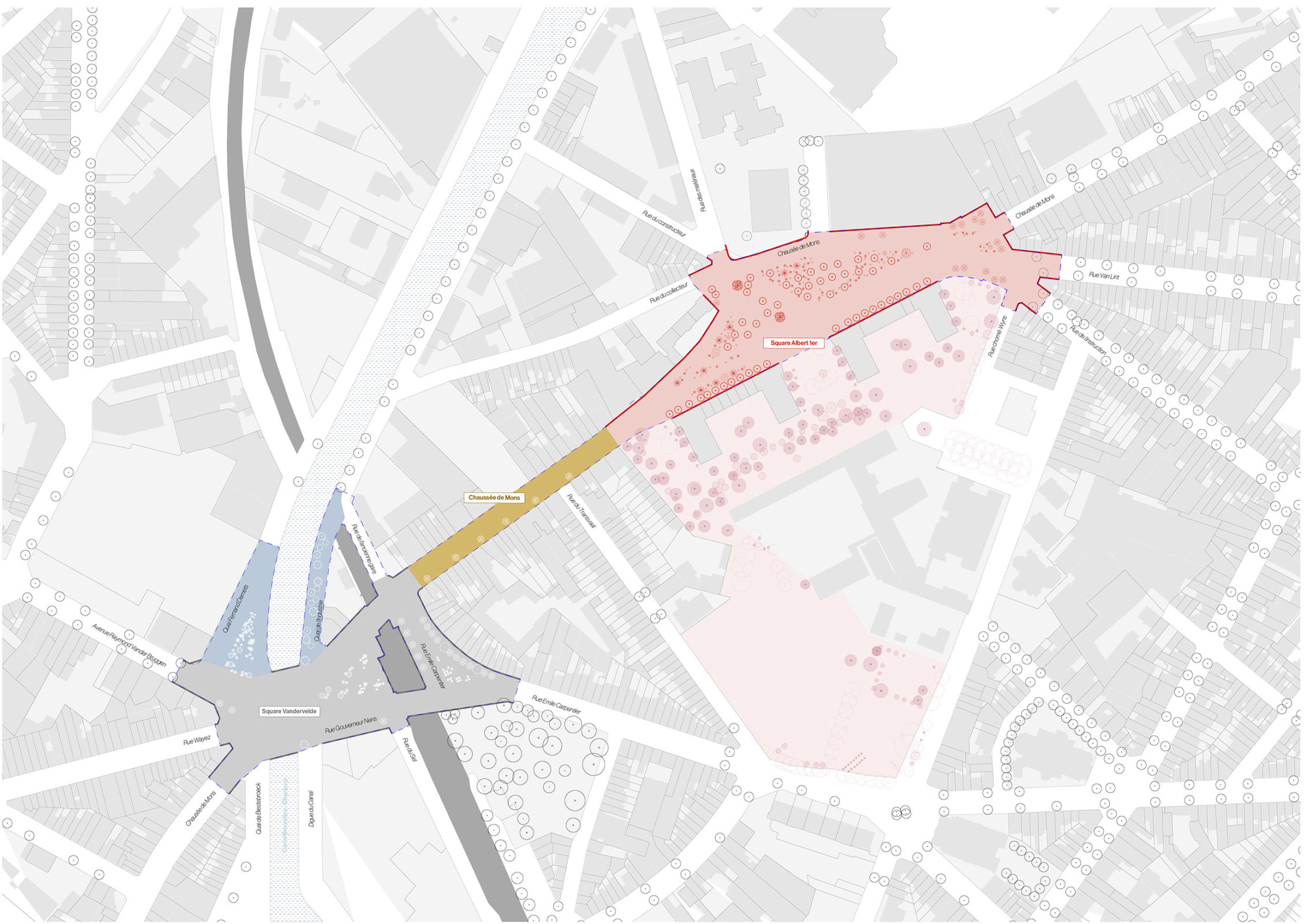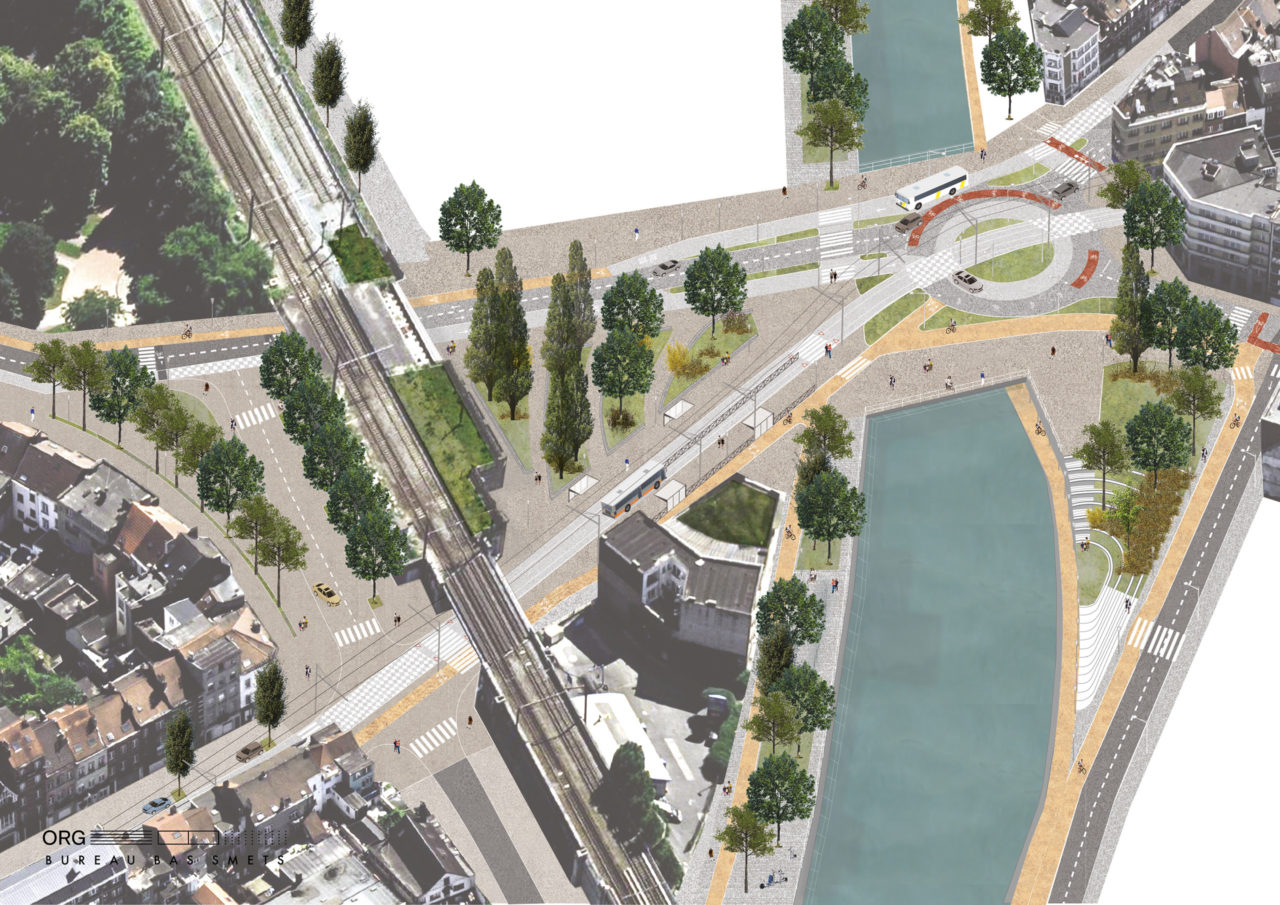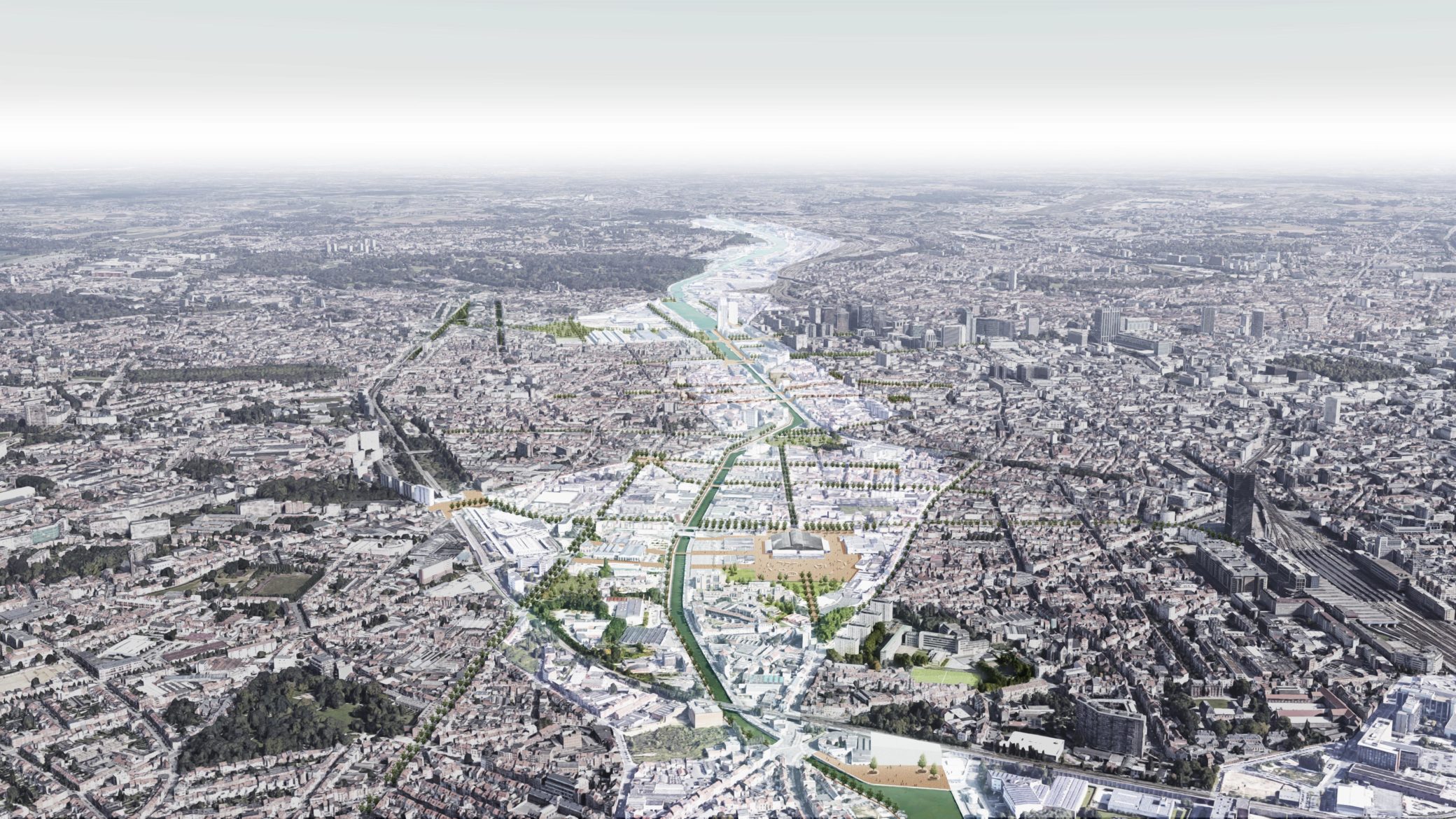Vandervelde Square

The renovation of the Vandervelde square, the Albert 1st square, the Vandervelde crossing and the Chaussee de Mons located between these two squares is set to transform Anderlecht's urban environment into a more vibrant and inviting public space. The transformative plan was designed with input from various stakeholders to ensure that it reflects the community’s needs and desires.
Portions of Anderlecht are often used as a transition district where many immigrants arrive each year, leaving as soon as they find a permanent home elsewhere. The plan works to provide newcomers and long-term residents a safe, usable, pleasant and healthy public space, all while connecting the urban fabric on both sides of the canal. For this reason the project is organized on simple geometry, mutual visibility, accessibility and overall usability of spaces.

The plan sets the stage for some exciting changes, including traffic redirection, green space expansion and improved accessibility. The quays along the Brussels-Charleroi canal will be converted into pedestrian-friendly zones with dedicated cycling paths, while Albert 1st Square will become a public garden. These efforts combined will create harmonious, accessible and green spaces while preserving historical context, resulting in an enduring public landscape for everyone to enjoy.
The plan envisions a harmonious environment that stretches from the southwest side of the Vandervelde square to the northeast facades of Carpentier Street. The aim is to reduce barriers within the square, improve road organization and enhance the overall user experience through enhanced mobility, safety improvements, connective design and a revitalized train station.
The plan includes minimizing obstructions in the square and introducing a more structured traffic system. To achieve this, we’ll reroute automobile traffic from Chaussee de Mons to Gouverneur Nens Street. This will leave a portion of the roadway between Carpentier Street and Vandervelde Crossroad exclusively for trams and active modes of transportation. Tram stop Cureghem will be part of a car-free zone on Square Vandervelde, improving accessibility for pedestrians.
As part of the plan, Carpentier Street will undergo a transformation to achieve a cohesive appearance by integrating the road and sidewalks, ultimately fostering a more balanced and unified space. This continuity in design will be emphasized by adhering to specific design principles and materials akin to those used in Square Vandervelde. Additionally, the presently vacant Cureghem train station building holds great potential to serve as a focal point within this expansive public area, instead of acting as a mere divider between two distinct public spaces.
Chaussée de Mons will be redesigned for increased safety for both drivers and pedestrians. A dedicated bus lane extends to Gouverneur Nens Street, where a bus stop is separated from transit traffic by a pedestrian waiting area. A two-way cycle path will connect cycling routes, and on Square Vandervelde, it is disconnected from automobile traffic but maintains connections to existing cycling infrastructure at strategic points.
At the Square Vandervelde, a triptych of tiered public spaces is created, transforming residual spaces into three clearly defined and high-quality green spaces. The central green space on Square Vandervelde, previously inaccessible and enclosed by a retaining wall, will be made more accessible and inviting by removing visual barriers and integrating tiered seating and greenery to match the terrain's contours. Pathways between each tier will connect De Lijn and STIB bus stops, improving the overall quality of this new transfer and waiting area.
The quays are nowadays mainly for cars, with narrow and neglected bike lanes. They're mostly used for parking, with limited green areas. The waterfront potential is unused because of low water levels compared to the quay. The project proposes to lower the quay gradually between Fernand Demets Quay and the canal at the Cureghem Bridge, creating an open space facing the canal with a cycling path and a roadside sidewalk. This stepped structure incorporates green spaces and benches, transforming the area into an attractive place for pedestrians and local residents. Beyond the project area, the quay development fits within the broader vision of the BKP (more info here).
On Square Albert, the project aims to create a high-quality and pleasant place for both passersby and local residents, transforming it into a "grand garden" in line with the current project to redesign public spaces around and behind the Foyer buildings. To establish a visual connection with the canal, the park's path structure extends the axes of Constructeur Street and Matériaux Street.
Overall, the project seeks to revitalize these spaces, making them more accessible, green, and pedestrian-friendly while preserving their historical and urban context.
Location
Anderlecht, Brussels, Belgium
Year
2021 - ongoing
Team
Yannick Vanhaelen, Britt Van Rompaey, Léa Colombain, Rime Abbad El Andaloussi, Paul Boeffard, Nikita Shah, Heinrich Altenmueller, Sanne Peeters, Lucas André
Clients
Service Public Régional de Bruxelles (SPRB) Bruxelles Mobilité
Size
40 ha
Program
Public Space, Transportation, Infrastructure, Landscape
Collaborators
Bas Smets Landscape Design, Aries Consultants, Atelier voor Ruimtelijk Advies, Common Ground, Bollinger + Grohmann, Radiance35
Related Projects





